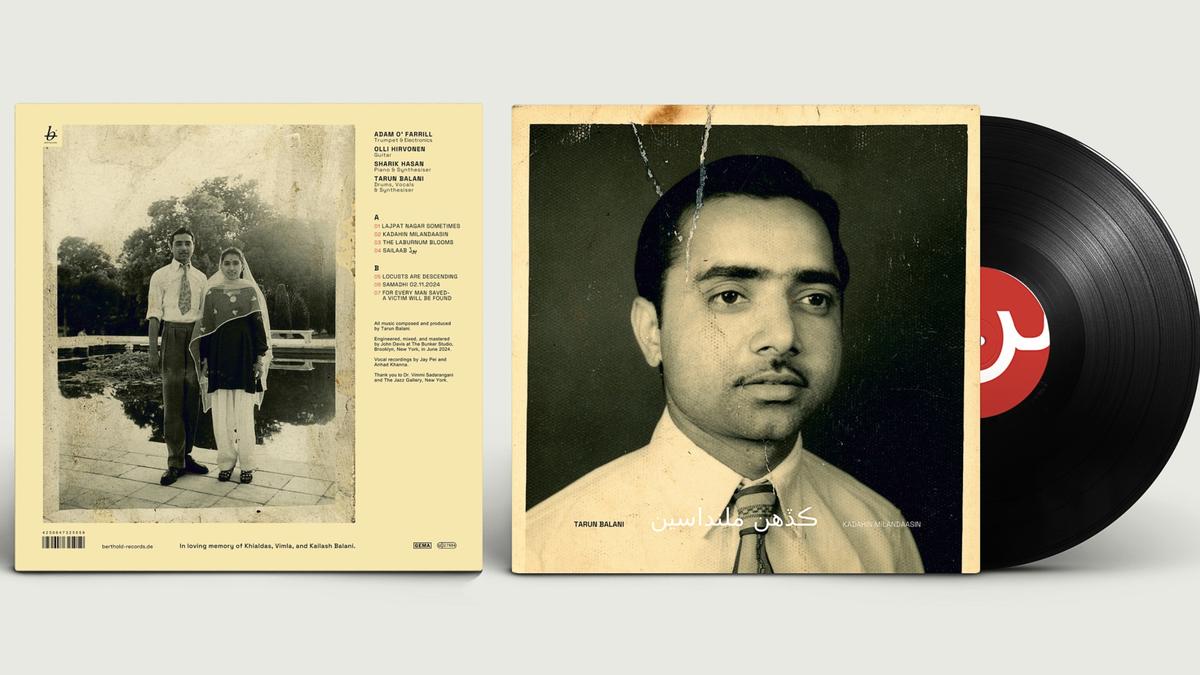
Jazz musician and drummer Tarun Balani’s fourth album Kadahin Milandaasin is a sonic love letter to Sindh
The Hindu
Recorded by Grammy-winning sound engineer and producer John Davis, Jazz musician Tarun Balani’s album explores themes of migration, grief, and longing
Two photographs, a Yashica 635 camera, and the weight of grief orchestrate a symphony of jazz in the creative world of Tarun Balani, who is all set to release his fourth album Kadahin Milandaasin in May.
Intended to be an empathetic epistle to the pain and longing of migrants, the seven-track album has been recorded, mixed, and mastered by Grammy-winning sound engineer and producer John Davis at Bunker Studio in Brooklyn, New York, and has been mounted on German record label Berthold Records.
It is inspired by Delhi-based musician Tarun’s memories of his grandfather — Khialdas Suratram Balani, an illustrator, artist and photographer, who migrated from Naushahro Feroze, in Sindh, Pakistan to Delhi’s refugee colony Lajpat Nagar during the Partition. “While Kadahin Milandaasin explores my quest for familial roots, it is a deeply personal account of the loss I feel, first from the demise of my grandfather, who I never had the chance to meet; and second, from that of my father, who passed away in November last year, soon after I completed recording the album,” shares Tarun.
He traces the album’s inception to February last year, when his father handed him two photographs of his grandfather. “I grew up around my grandfather’s art. As a kid, I remember opening the cupboard in which his Yashica 635 camera rested, and would play with it all day. Though there was palpable grief about my grandfather’s death in my family, no one really talked about it. So, I only could know my grandpa through his works and material memory,” says Tarun, adding, “My grandfather was a short story writer too. One of his short stories, Prabha ain Kranti was featured in Sindhi Sahitya Academy compilations. I would often concoct imaginative stories about his life. Now, as a mid-career artiste myself, I would love to have chatted with him about his life and maybe know what it was like to be painting and photographing in the 1960s.”
The two photographs that Tarun received from his father now serve as the album’s cover art. “The cover was designed by Travassos, an artist from Lisbon. A Sindhi scholar and poet, Vimmi Sadarangani, helped me get the Sindhi script, a mix of Persian and Arabic, for the cover,” says Tarun.
The title of the album finds its muse in Sindhi poet Shaikh Ayaz’s poem called Teri Pawanda. “He wrote this poem for his friends and family and it expressed a feeling of loss and grief, along with a reassurance of reunion; thus, the verse, ‘Tade Milandaasin’, which means ‘we will meet then’. I flipped it around to Kadahin Milandaasin, which translates to ‘when will we meet’,” explains Tarun.
The metaphorical interpretation of the title could be addressed to Tarun’s longing for his father and grandfather, while also extending to their longings — perhaps, the longing of his grandfather for his homeland, which is now in Pakistan, and maybe his father’s longing to become an Indian classical singer or hearing his son sing. It could as well be assigned to the collective longing of the Sindhi community for the lost land of Sindh or to those migrants who moved to India during Partition. He leaves the interpretation to the listener.





















 Run 3 Space | Play Space Running Game
Run 3 Space | Play Space Running Game Traffic Jam 3D | Online Racing Game
Traffic Jam 3D | Online Racing Game Duck Hunt | Play Old Classic Game
Duck Hunt | Play Old Classic Game











